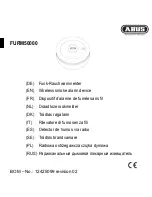
66
The Sapling Company, Inc.
1633 Republic Road
Huntingdon Valley, PA 19006
USA
P. (+1) 215.322.6063
F. (+1) 215.322.8498
www.sapling-inc.com
Frequently Asked Questions
For 24V clocks, what happens if voltage on the power line drops from 24VAC to lower voltage?
The clock will still function, and will maintain the same level of brightness. However, the current
consumption will increase proportionally to the decrease in voltage. Very low voltage will cause the display
to turn off.
Will the wireless clock cause interference with other wireless devices?
No. SBT Series Wireless Clocks work on 900 MHz (2.4GHz for SBTG) frequency-hopping technology, which
allows the clock transmitters to avoid interfering with other devices operating on those frequencies.
Do I gain any advantages by having more than one transceiver on a locally-powered wireless
clock system?
Additional transceivers are only useful if you must mount a clock beyond the range of all other wireless
clocks. If all the clocks in the system are in range of each other, then there are no additional benefits from
having more than one primary transceiver.
How long does it take for a clock to receive a signal?
If everything is installed correctly and the transponder is open, the clock should get the signal within five
minutes. If the user wants to manually cause the clock to do this, please refer to “Manually setting a
connection between two or more SBTs“ under the section “Synchronization system setup”. Once the
clock has been synchronized, it will attempt to acquire a time signal once every minute.
Whether or not a clock actually receives a signal is dependent on the settings of the signal source. For
instance, a receiver on a locally-powered digital clock that uses a battery-powered analog clock on
economy mode as a signal source will only receive time data when the signal source transmits it—once
every four hours—even though the receiver on the digital clock listens for a signal once every minute.
When I power my clock, it seems to be running a test instead of showing the time. What is
it doing?
Immediately after power up an SBT/SBTG will run an LED display test to allow the user to confirm that each
segment of the display is functioning properly.
Can this clock accept time data from wireless clocks that DO NOT have the TalkBack feature?
While the SBT will accept time synchronization data from SBL and SAL clocks, it cannot send TalkBack data
back to the master clock this way. An SBT must work with a chain of SBT and SAT clocks to get a TalkBack
signal to the Master Clock or Network Repeater.
Can this clock send time data to wireless clocks that DO NOT have the TalkBack feature?
The SBT can send time synchronization data to SBL and SAL clocks. This is a one-way form of
communication and it does not turn the SAL/SBL clocks into TalkBack clocks.




































